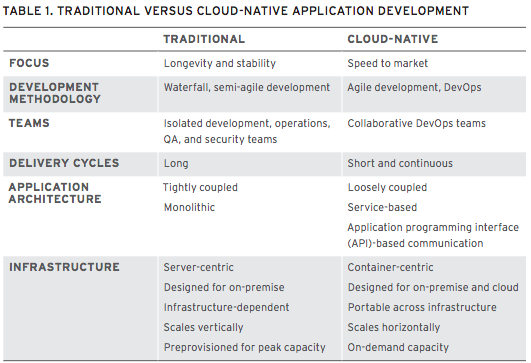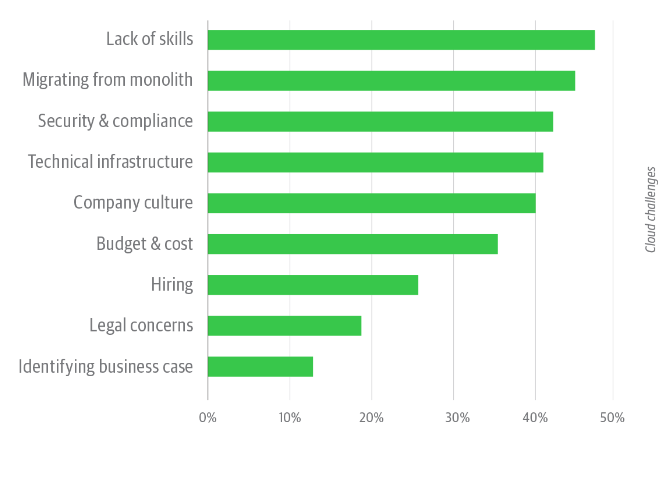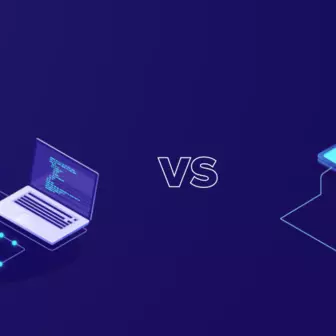Traditional measures of development and delivery of software are taking new shapes in terms of faster, easier and powerful alternatives. While the industry is still embracing DevOps, the failures on the way are inevitable. Only on the path of innovation can we emerge with better solutions like the cloud-native approach.
The way applications are built with these new propositions can lead to bigger developments and digital transformations in modern enterprises. Let’s delve into the nature of Cloud-native with DevOps.
Stages Of The Cloud-native Journey
From adopting the innovation to accomplishing it, cloud-native is an arduous journey to be undertaken. It can be divided into three categories:
Stage 1: Embracing the Evolution
Organizations need to truly grip the evolutionary wave of technology and take advantage of the rapid innovation.
Since DevOps relies more on the culture and collaborative nature of the teams than on the tools, the culture itself can significantly accelerate the pace of innovation.
The key factor is to integrate DevOps practices with cloud-native applications and create a stronger base for the monolithic architecture. Further, with robust design principles and defined domains, the container-like microservices can also be introduced.
Stage 2 – Experimental
Now that we know what dimensions to take care of, the next step is the experimentation with tools and technology. Often the IT teams deploy their own cloud infrastructure in order to increase the deployment which isn’t approved by the organization or the management. This phenomenon can lead to a common occurrence of ‘Shadow IT’.
What breaks this cycle is the active engagement of DevOps practices and microservices architecture.
The teams can start by investing in the right monitoring solution in order to increase the development velocity. Another area of experimentation is the optimized and integrated version of reusing the development cycles and components. Also, the developers can build the experiment with the container-based infrastructure and utilize capabilties of CI/CD pipelines, scalability and fault tolerance.
Stage 3: Cloud-Native
Placing value on the granularity and separation of services, the microservices provides a container-based platform where deployments can take place multiple times a day. Decentralizing the whole process in small units and components, the production of the software is executed without delay in time to market, reduction in dependencies and speeding of overall time to value.
Microservices is one of the best platforms that support different frameworks, languages, and approaches to cloud-native application development.

How did the Cloud-Native Model Emerge?
After the success of the headless design and approach that separated the backend and front-end, it was time to take the next plunge.
Organizations started with looking for completely rewriting the model using the cloud-native framework. They were seeking the freedom to experiment and lead to continuous integration of the product. The concept of continuous delivery too attracted them to adopt the microservices as an approach. The liberty of deploying in separate units with no dependency as an idea appealed to the management given that it eliminated the risk factors of traditional approaches.
Here are a few important considerations:
- Autonomy to take charge of the management systems
- Smaller teams of developers that can easily contribute to big projects
- Reusable cycles and components for the next projects
- Private premises and independent data center assets
- Scope of bigger experiments that can take place in the cloud-native environments
What’s the buzz about Cloud Nativity?
While things did work out before the introduction of cloud-native also, they just have become better like any other up-gradation. Here are the following characteristics that make it stand out:
- Cloud-native has not only altered the computing space but also shifted how we look at data.
- The telecommunication industry is looking to build cloud computing centers that cost low and manages custom applications.
- It encourages the contributing spirit of developers in the open source space who want to build better systems, functions, and databases.
- It has redefined the entire software industry with the cloud-native models that enable endless possibilities for companies to achieve their targets.
3 Common Pitfalls With Cloud-Native DevOps
Over Investing in Tools
Though automation is all about tools, it is about the ‘right stack’ and not just the hoarding of tools. The integration of new systems and tools involve the cost of setting them up, integration, up-gradation and then mastering them too.
Also, sometimes the teams get hooked on a tool for far too long. This is where the organizations slip into a slumber. The onus is on the organizations to maintain their stack of tools. However, the heart of DevOps lies in the team spirit and adoption of the right practices that lead to increased efficiency and improved workflow.
Beyond Testing
Though testing within the deployment pipelines made the whole process more transparent and flowing for the teams, it also made them complacent. The ‘build test’ is too limiting and insufficient for the deployment to be a success. The DevOps team should step in and optimize the whole process with continuous monitoring and reporting of the failures that occur even after testing.
Security Lacks
Security tests can be time-consuming and expensive for the organization. It is often observed in the industry that the security testing features within the CI/CD workflows are put to use. However, adopting a new tool dedicated to security becomes a crucial step for the DevOps to transform and prevent any losses in the process. According to agile principles, smaller and slower tweaks down the line is the best way to shift into a new environment. Do not rush into the cloud-native know-how without strategizing or giving it a thought.

Kubernetes – Leading The Way
The Data Dog’s recent survey data shows that Kubernetes is increasingly the first choice among container users and the adoption is exploding in a rapid phase.
The above-mentioned pain points of cloud-native are what Kubernetes address fundamentally. Features like reliability, fast-growing community and open source platform, Kubernetes has increasingly become the first choice of many organizations.DevOps teams are embracing the tool and adopting the measures in order to automate their deployments, scale and manage microservices and monitor their containers.
Conclusion
Innovation and acceleration in the digital space for modern enterprises are being led by cloud computing. Cloud-native is here to stay, however, only with DevOps. Successful adoption of both and aligning your goals is what organizations should strive for.
What's your take on adopting Cloud-native in DevOps? Share your views with us by commenting below or write to us at [email protected].
Do not forget to follow us on Facebook, Twitter, and LinkedIn!
Subscribe
Related Blogs
Serverless vs Managed Services: Which One to Choose

When you decide to build an application in the cloud, you need to consider several factors. One of the most important…

Over the past few years, the cloud industry has gone through an extreme change with the transformation of serverless…
Putting The Serverless Trend Under a Microscope

Flexible. Scalable. Economical. These terms essentially sum up the advantages of serverless computing, an architecture that…




